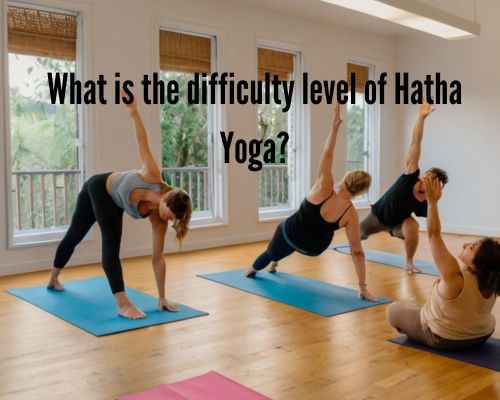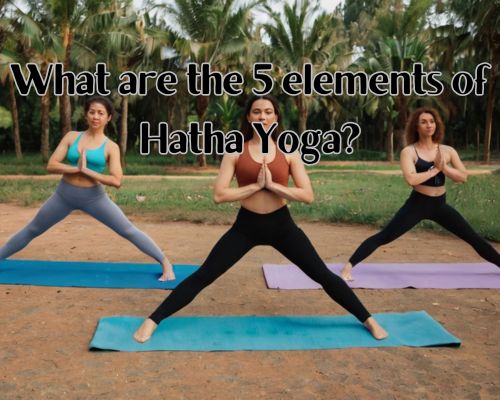What is the Difficulty Level of Hatha Yoga? Exploring Its Practice in Australia
Hatha Yoga is a cornerstone of yoga practice, blending physical postures, breathing techniques, and meditation to promote balance and well-being. If you’ve been exploring yoga options in Australia, you may wonder: What is the difficulty level of Hatha Yoga? This guide will provide insights into Hatha Yoga’s intensity, adaptability, and benefits, while weaving in relevant details about its growing popularity across Australia.

Understanding Hatha Yoga and Its Core Principles
Hatha Yoga serves as the foundation for many yoga styles practiced today, focusing on the union of mind and body. The term “Hatha” translates to “forceful” in Sanskrit, emphasizing deliberate movements and postures (asanas) that are accessible to people of varying fitness levels.
Hatha Yoga classes typically involve:
- Asanas: Gentle to moderately challenging physical poses that improve strength and flexibility.
- Pranayama: Breathing exercises designed to enhance focus and relaxation.
- Meditation: Techniques to calm the mind and achieve inner peace.
In terms of difficulty, Hatha Yoga is widely regarded as beginner-friendly, though it can also challenge experienced practitioners depending on the instructor’s approach and class structure.
What Makes Hatha Yoga Accessible for Beginners?
Hatha Yoga is often recommended for individuals new to yoga due to its slow pace and emphasis on foundational poses. Unlike dynamic styles such as Vinyasa or Power Yoga, Hatha Yoga allows practitioners to hold postures for longer, enabling a deeper understanding of alignment and form.
For Australians eager to integrate yoga into their routine, Hatha Yoga offers an approachable starting point. Popular studios in cities like Sydney, Melbourne, and Brisbane frequently include beginner-focused Hatha classes in their schedules. Many also provide modifications, see https://bikramyogamornington.com.au/, ensuring that students of all fitness levels can participate comfortably.
Factors That Influence the Difficulty of Hatha Yoga
Although Hatha Yoga is accessible, the difficulty level can vary depending on several factors:
- Instructor Style: Some teachers incorporate advanced asanas or extended holds, increasing intensity.
- Class Format: Studio-based classes in urban hubs like Perth and Adelaide might lean toward a more fitness-oriented approach compared to the restorative sessions offered in smaller towns.
- Personal Fitness Level: Beginners may find some poses challenging initially, especially if they lack flexibility or strength, but regular practice ensures gradual improvement.
The Benefits of Practicing Hatha Yoga
Whether you’re a resident of Australia’s bustling cities or its serene countryside, Hatha Yoga offers holistic benefits. Regular practice can:
- Boost Physical Health: Improve posture, balance, and core strength while enhancing flexibility.
- Reduce Stress: Breathing techniques and meditation foster mental clarity and relaxation.
- Promote Better Sleep: Studies show that Hatha Yoga aids in achieving restful sleep, which is especially beneficial for individuals managing busy lifestyles in cities like Sydney or Brisbane.
- Enhance Longevity: The practice cultivates mindfulness and reduces stress, aligning well with Australia’s emphasis on health and wellness.
Hatha Yoga in Australia: A Growing Wellness Trend
The yoga scene in Australia is flourishing, with Hatha Yoga being a cornerstone of the movement. Yoga studios and wellness retreats across the country cater to diverse needs, offering beginner-friendly classes and workshops.
Popular Locations to Practice Hatha Yoga in Australia:
- Byron Bay: Known as Australia’s yoga capital, Byron Bay boasts tranquil settings perfect for Hatha Yoga retreats.
- Melbourne: The city’s vibrant yoga community includes studios offering both in-person and online Hatha Yoga classes.
- Gold Coast: Outdoor yoga sessions along the coast often feature Hatha Yoga to leverage the soothing effects of nature.
Additionally, many Australian yoga studios, see https://bikramyogamornington.com.au/, have embraced hybrid models, offering both virtual and in-person classes to make Hatha Yoga more accessible to individuals in remote areas.
Tips for Australians Starting Hatha Yoga
If you’re considering Hatha Yoga, here are practical tips to ease your journey:
- Choose the Right Studio: Look for studios with certified instructors who cater to beginners.
- Invest in Quality Equipment: A durable yoga mat and comfortable activewear can enhance your practice.
- Stay Consistent: Regular attendance will improve your flexibility and understanding of asanas.
- Listen to Your Body: Modify poses as needed and avoid pushing past your limits.
FAQs About the Difficulty Level of Hatha Yoga
1. Is Hatha Yoga suitable for older adults in Australia?
Yes, Hatha Yoga is ideal for older adults due to its gentle pace and adaptability. Many studios in cities like Adelaide and Hobart offer senior-friendly classes.
2. Can beginners with no prior fitness experience practice Hatha Yoga?
Absolutely! Hatha Yoga’s emphasis on basic poses and mindful breathing makes it a perfect choice for those new to fitness.
3. How does Hatha Yoga compare to other yoga styles?
Hatha Yoga is generally slower-paced than styles like Vinyasa or Ashtanga, making it more approachable for beginners.
Why Hatha Yoga Is Perfect for Australians
Australia’s laid-back lifestyle and love for outdoor activities align perfectly with Hatha Yoga’s principles of mindfulness and balance. Whether practiced indoors or in the country’s stunning natural landscapes, Hatha Yoga complements Australia’s health-conscious culture.
By integrating Hatha Yoga into your routine, you’ll not only experience improved physical health but also embrace a deeper connection to your surroundings—a value cherished by many Australians.
Conclusion
So, what is the difficulty level of Hatha Yoga? While its accessibility makes it beginner-friendly, Hatha Yoga’s versatility ensures it can be tailored to challenge practitioners of all levels. Australians seeking to improve their physical and mental well-being will find Hatha Yoga an excellent choice, whether in bustling cities like Melbourne or serene retreats in Byron Bay.
Start your journey today by exploring the many Hatha Yoga classes and resources available across Australia, and discover the transformative power of this ancient practice in your life.

